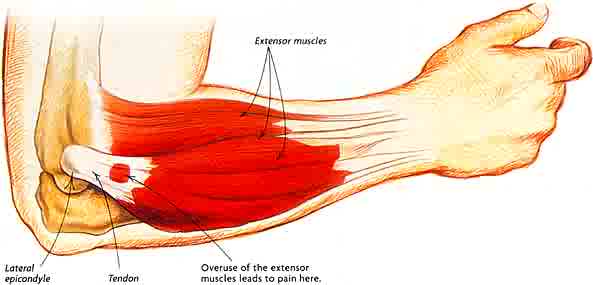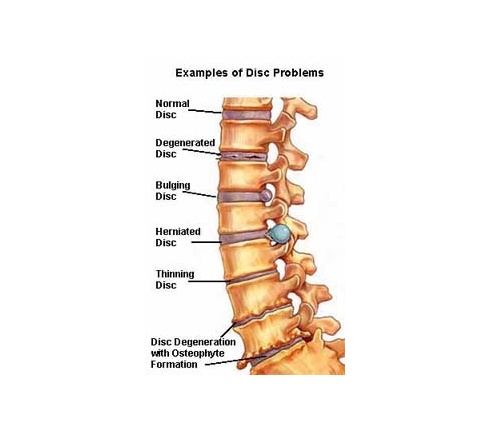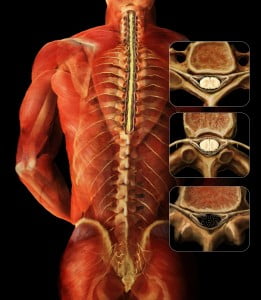posted by AJGpr | on health, medicine, social media | No comments

AJGpr client, Dr. Norman Marcus, author of End Back Pain Forever: A Groundbreaking Approach to Eliminate Your Suffering and founder of The Norman Marcus Pain Institute, recently posted a blog about the growing problem of prescription drug addiction and misuse and what government is doing about it. Here it is.
49 States Adopt Prescription Drug Database to Prevent Prescription Drug Abuse by Dr. Norman Marcus
Because of the growing problem of addiction, misuse, and diversion, 49 states have now adopted a state prescription drug database. You may have read an article recently in The New York Times about Missouri being the only state that has not adopted such a database. In New York, as a prescriber of controlled substances, each time a patient is prescribed any type of controlled substance, I must log into the NYS website to confirm that a patient is not receiving other medications from other doctors.
I found a few patients who had not been honest with me and had received medications from other doctors. Unfortunately, the small occurrence of dishonest behavior has obliged all doctors to be alert for the possible misuse of medication. At the Norman Marcus Pain Institute, I implement several rules for patients receiving any type of controlled substance from me. Here are a few of them:
• Only one physician can prescribe all pain medications.
• Only one pharmacy should be used to obtain all pain related medications.
• All medications, including herbal remedies and over the counter medications, need to be reported since all medications can interact with one another.
• Medications must be kept in a safe and secure place, such as a locked cabinet or safe.
Following these simple rules will help protect my patients and their families from improper use of pain medication.
posted by AJGpr | on health, medicine, web | No comments

AJGpr client, Dr. Norman Marcus, author of End Back Pain Forever: A Groundbreaking Approach to Eliminate Your Suffering and founder of The Norman Marcus Pain Institute, recently posted a blog entitled http://www.normanmarcuspaininstitute.com/49-states-adopt-prescription-drug-database-to-prevent-prescription-drug-abuse/ Tennis Elbow Causing Your Pain? PRP is NOT the Solution Study Shows.
In this blog he talks about what treatments work to end tennis elbow pain and what don’t. Below is his post.
——————————————————————————————————————————————
Tennis Elbow Causing You Pain? PRP is NOT the Solution Study Shows
At NMPI, we frequently see patients in our office with pain in their elbow. Most often it’s tennis players who complain of persistent pain in the forearm as the result of overuse from racquet sports but other sports and non-athletic activities can also put you at risk for this condition known as Tennis Elbow (TE), or lateral epicondylitis. Strain related changes in the tendons that join the forearm muscles to the outside of the elbow can be very painful.
I was not surprised to read in the British Journal of Sports Medicine, that a recent study (Strong Evidence Against Platelet-rich Plasma Injections for Chronic Lateral Epicondylar Tendinopathy: A Systematic Review) reported that PRP, which I recently reported as not being effective for hamstring injuries, is now found to be ineffective for persistent Tennis Elbow as well. PRP has been increasingly used for many painful conditions that athletes experience. This is based on the finding that in laboratory animals healing can be induced in damaged tissue if platelets are injected into the injured area. The popularity of PRP for TE has growndespite no strong evidence that it actually works. Sir William Osler, a renowned physician once said “use every new treatment as quickly as possible before it stops working.” At NMPI, we do not rush to use a “new” approach just because it is new. We are committed to eliminating our patients’ pain and preventing its recurrence.
TE is commonly diagnosed by producing pain when pressing on the tendons that attach to the lateral epicondyle along with pain when the wrist is pulled upward (dorsiflexion) against resistance. TE is generally self-limiting but in some patients it may take more than a year to get better with no treatment. When the pain and tenderness persist various treatments have been tried.
Here’s what works:
- In a 2010 paper, an exercise treatment was found to be very effective in relieving TE pain and tenderness.
- At NMPI, we treat these tender muscles successfully with a laser or with muscle injections.
Here’s what doesn’t work:
- Steroids are not recommended since there is no inflammation in TE and steroids can actually damage the tendon.
- PRP for tennis elbow has been found to not be effective
Newer treatments are often not better. It is always best to first treat any lasting pain problem with the least invasive, safest, and least expensive interventions. This is called the step-care model and the approach you will receive at the Norman Marcus Pain Institute.
posted by AJGpr | on education, parenting, social media | No comments

AJGpr client, educational consultant Angelina Arrington, Founder of Academic Savvy, has just posted her second blog installation in her Summer Savvy Series to kids learning and having fun during the summer break when statistics shows that math and reading levels drop during these months. Here is Part 2.
Summer Savvy Part 2: Your Kitchen: The perfect spot for family fun and summer learning!
When I was growing up, our summers meant lazy days spent playing softball at the park, swimming at the local public pool, helping my school teacher mother prepare her classroom for the fall, following my grandmother around the kitchen, and running around outside with other kids from the block until the street lights came on. July and August were filled with all sorts of adventures, and my friends and I returned to school in September with plenty of stories to tell. Cooking and experimenting with food was one of my favorite activities. I’ve been fiddling around the kitchen since I was about seven. One of my early specialties was cinnamon toast, and I eventually graduated to lemon cakes and peach cobblers under the tutelage of my grandmother. Those summer days acting as her sous chef are still some of my fondest memories.
Summer is the perfect time to get in the kitchen and whip something up with your kids! It can be challenging for families to find the energy to cook together during the school year. After a full day at work and school, sports practice, and tutoring, oftentimes the family is running on empty. Use the summer break to slow the pace and create fantastic memories right in your kitchen. Parents, your kitchen can transform into a great science lab and math workshop. Include you kids in the many skills to be learned while working away at the kitchen counter: measurements, fractions, categorizing lists, learning to tell time, states of matter, making hypotheses, and much more.
The most important outcome of cooking with your children, however, is the time spent together as a family being creative and sharing ideas and lots of laughs. So, get out your measuring cups and spoons, cookie sheets, and rolling pins, grab fresh fruit, almonds and rainbow sprinkles, don an apron (or a lab coat if you’re feeling adventurous), and turn on some fun tunes. The Internet is chocked full of recipes for all ages, and I’ve listed a few simple recipes below that make a big splash with school-age children. Bon appétit!
Homemade Ice Cream in a Coffee Can
Tips and recipes for baking cookies with kids
posted by AJGpr | on celebrity, health, medicine | No comments

DID YOU KNOW THAT…
- 4 out 5 Americans suffer from back pain.
- Back pain, now the most common disability in the United States, is the number one reason people go to the doctor or miss work.
- In fact, every year nearly 12 million Americans make new-patient visits to physicians for back pain and one hundred million visit chiropractors.
WELL…
A few weeks ago, The NewYork Times, published an article entitled, Common Back and Leg Pain Treatment May Not Help Much, Study Says. Basically, the article talks about a study recently published in the New England Journal of Medicine that shows the common and widely used treatment for lower back and leg pain caused by stenosis — a stenosis injection which combines a steroid and a local anesthetic is INEFFECTIVE. In fact, the article goes on to say doctors and patients should think twice about using the treatment at all.
AJGpr client, Dr. Norman Marcus, one of the nation’s leading specialists and a pioneer in the treatment and relief of chronic pain, and author of End Back Pain Forever: A Groundbreaking Approach to Eliminate Your Suffering, has been saying this for YEARS!
Dr. Marcus contends that, “One reason why this approach is ineffective is that the pain in the back and leg may not be the result of the narrowing or other supposed abnormalities seen on the MRI or CT scan. It is well known that very few (in one published article – less than 10%) scans of the low back in adults are read as normal; as many as 40% of adults with no back pain have herniated discs, and 70% have degenerated discs.”
Named one of the “Best Doctors in New York for pain management” by New York Magazine and founder of the Norman Marcus Pain Institute, Dr. Marcus responded to the The New York Times article and the New England Journal of Medicine study in his blog Epidural steroids are not effective for spinal stenosis.
——————————————————————————————————————————————
Epidural steroids are not effective for spinal stenosis.
I have been suggesting for many years that there is an overuse of spinal injections and surgeries for low back and leg pain, so it was no surprise when I read an article in The New York Times (NYT) that reported on a study recently published in the New England Journal of Medicine[1] about patients with spinal stenosis who are frequently treated with a procedure that has been shown to be ineffective. Epidural steroid and lidocaine injections for patients found to have spinal stenosis were no better than epidural injections of lidocaine alone. In chapter 4 of my book End Back Pain Forever I discuss the many reasons for back pain. MRIs and CT scans of the low back will almost always find something such as spinal stenosis or a degenerated or herniated disc even in patients without pain. Therefore the US Institute of Medicine suggests that these imaging studies should not be done routinely since what you find in the study is frequently not the cause of your pain. The most common cause of back pain is muscles and other soft tissue. If you treat the diagnosis you got from the MRI or CT and the actual reason for the pain is muscle, it makes sense that the treatment will frequently fail, which it does!
The NYT report of this relatively large, randomized, double blind, controlled study clearly demonstrates the ineffectiveness of the use of steroids for symptoms attributable to spinal stenosis (narrowing of the canal in the spine which contains the spinal cord) which occurs frequently as we age. The treatments most often provided are epidural steroids to theoretically reduce the inflammation of the nerves being squeezed by the narrow canal, and surgery to widen the canal. Both approaches have a significant failure rate.
At the Norman Marcus Pain Institute we have shown in multiple published articles that one reason why these approaches are ineffective is that the pain in the back and leg may not be the result of the narrowing or other supposed abnormalities seen on the MRI or CT scan. It is well known that very few (in one published article- less than 10%) scans of the low back in adults are read as normal; as many as 40% of adults with no back pain have herniated discs, and 70% have degenerated discs. So it is “normal” to find an abnormality.
Our unique physical examination, utilizes an instrument I developed, reveals that many patients with back and leg pains have areas of muscle tenderness that are the source of their pain yet are overlooked. One study of more than 23,000 patients[2] found that 70-80% of patients with back pain were diagnosed with sprains and strains of muscle and other soft tissue. It’s hard to believe then, armed with this knowledge, that muscle examination and treatment is not part of the typical standard of care for back pain in the USA[3]. If we are to properly address the cause of most back pain, the evaluation and treatment of its muscular causes must be addressed.
[1] Friedly JL, Comstock BA, Turner JA, et al. A Randomized Trial of Epidural Glucocorticoid Injections for Spinal Stenosis. New England Journal of Medicine. 2014:374:11-21.
[2] Deyo RA, Weinstein JN. Primary care – low back pain. New England Journal of Medicine. 2001:5:363-70.
[3] Chou R, Qaseem A, Snow V, Casey D, Cross JT, Shekelle P, et al. Diagnosis and Treatment of Low Back Pain: A Joint Clinical Practice Guideline from the American College of Physicians and the American Pain Society. Ann Intern Med. 2007;147:478-491.
posted by AJGpr | on education, parenting, social media, web | No comments

AJGpr has just added another expert to their client list, educational consultant, Angelina Arrington, founder of Academic Savvy.
In addition to the educational consulting and academic planning she provides for parents, Angelina also blogs about all sort common sense and balanced advice for parents trying to navigate the often-complex path to helping their children achieve educational success. She is an expert at guiding parents to “optimize” their child’s potential in and out of school.
With the recent launch of her educational consulting firm, Academic Savvy, Angelina has posted the first of a blog series called Summer Savvy. This blog series is meant to help parents find fun things to do with kids over the summer that also keep them learning. Here (and below) is first, entry How to Keep Kids Engaged, Learning, and Having Fun Over the Summer.
Enjoy!
——————————————————————————————————————————————
Summer Savvy Part 1: How to Keep Kids Engaged, Learning, and Having Fun All Summer
With school out and summer fast approaching, parents often start thinking of what activities they can do to keep their kids engaged, thinking, and having fun. While kids need summer time to disengage from schoolwork and just be kids, its also important for parents to keep children intellectually engaged throughout summer. Studies show that students lose months of reading and math skills over summer vacation, a phenomenon known as Summer Math Loss. In fact, research indicates that most students lose about two months of grade level equivalency in mathematical computation skills over the summer months. (Cooper, 1996).
Academic Savvy offers many creative “learning” activities for parents to do with their kids over the summer. Below is the first of a three-part series beginning with math fun.
Summer Savvy Part 1: Grocery Store Math
Grocery shopping is one of the best examples of a place where math is real. It is a great place for practicing estimation, numeracy, mental math, comparing shapes, and measurement, just to name a few. By allowing your children to actively participate in weighing, counting, and figuring prices per pound, you are reinforcing abstract skills learned in class within a real-life context. Next time you’re at the store, try the following activities with your child:
Rounding Up/Down and Mental Math – as you place items in your cart, have your child round up or down to the nearest dollar, then keep a mental tab of the total cost of your purchase.
Using a Calculator – as you place items in your cart, have your child round up or down to the nearest dollar, then add or subtract items to keep a tab of the total cost. Right before you reach the register, have your child calculate the sales tax as well.
Recognizing Numbers – for kids ages 3-6, playing a number recognition game is a great way to reinforce numeracy. As you shop, call out different numbers, and ask your child to find it on the shelves or on products.
Identifying Shapes – for kids of all ages, this activity will help reinforce geometry skills. As you shop, call out a shape, for example a square, and ask your child to find other items shaped just like it.
Weighing Produce and Calculating Cost – while shopping in the produce section, you can ask your children to predict how heavy items are or if one item is going to be heavier than another. Older children can use the price per pound to calculate the total cost of an item.
These are just a few of the things you can do with your children this summer to avoid summer learning loss. Here are a few links below to other sites that have wonderful suggestions and activities to help your kids have a fun and productive summer.
posted by AJGpr | on parenting, web | No comments

AJGpr client Emma Jenner, a child development and behavioral specialist and author of the new parenting book Keep Calm and Parent On: A Guilt-Free Approach to Raising Children by Asking More from Them and Doing Less (Atria, July 15th) also blogs for the Huffington Post’s Parenting section. Her most recent post – 5 Reasons Modern-Day Parenting is in Crisis (the full article is also posted below) has already received over 255K likes.
Emma, a British native, spent 17 years as a professional nanny and baby nurse for a variety of high profile and celebrity families in England, Germany, and the United States. American audiences know her best as “Nanny Emma,” from the 2008 TLC series Take Home Nanny, when she traveled across America helping families put harmony back in their homes.
Today, Emma is a parenting consultant and founder of Emma’s Children. So, in addition to in-person consultations, Emma is available by phone, face-time, and SKYPE, to help families nationally and internationally create a loving and nurturing home environment.
As an author and consultant, Emma offers the best of both British and American traditions to help parents navigate the often complex journey of raising children from birth to 7 years old. Her book, Keep Calm and Parent On, is a treasure trove of common sense, balanced, and holistic parenting tools and solutions. Emma’s favorite mantra is, “If parents are in control, they can enjoy their children more.” And what could be more enjoyable than well behaved, respectful, healthy, thriving kids?
—————————————————————————————————————————————
From the Huffington Post
5 REASONS MODERN-DAY PARENTING IS IN TROUBLE
I generally am quite an optimistic person. I tend to believe that everything will work out for the best unless the evidence is overwhelmingly to the contrary, and anyone who knows me will tell you that I am not prone to drama. That’s why when I say that modern parenting is in serious trouble — crisis, even — I hope you’ll listen, and listen carefully. I’ve worked with children and their parents across two continents and two decades, and what I’ve seen in recent years alarms me. Here are the greatest problems, as I see them:
1. A fear of our children.
I have what I think of as “the sippy cup test,” wherein I will observe a parent getting her toddler a cup of milk in the morning. If the child says, “I want the pink sippy cup, not the blue!” yet the mum has already poured the milk into the blue sippy cup, I watch carefully to see how the parent reacts. More often than not, the mum’s face whitens and she rushes to get the preferred sippy cup before the child has a tantrum. Fail! What are you afraid of, mum? Who is in charge here? Let her have a tantrum, and remove yourself so you don’t have to hear it. But for goodness’ sake, don’t make extra work for yourself just to please her — and even more importantly, think about the lesson it teaches if you give her what she wants because she’s thrown a fit.
2. A lowered bar.
When children misbehave, whether it’s by way of public outburst or private surliness, parents are apt to shrug their shoulders as if to say, “That’s just the way it is with kids.” I assure you, it doesn’t have to be. Children are capable of much more than parents typically expect from them, whether it’s in the form of proper manners, respect for elders, chores, generosity or self-control. You don’t think a child can sit through dinner at a restaurant? Rubbish. You don’t think a child can clear the table without being asked? Rubbish again! The only reason they don’t behave is because you haven’t shown them how and you haven’t expected it! It’s that simple. Raise the bar and your child shall rise to the occasion.
3. We’ve lost the village.
It used to be that bus drivers, teachers, shopkeepers and other parents had carte blanche to correct an unruly child. They would act as the mum and dad’s eyes and ears when their children were out of sight, and everyone worked towards the same shared interest: raising proper boys and girls. This village was one of support. Now, when someone who is not the child’s parent dares to correct him, the mum and dad get upset. They want their child to appear perfect, and so they often don’t accept teachers’ and others’ reports that he is not. They’ll storm in and have a go at a teacher rather than discipline their child for acting out in class. They feel the need to project a perfect picture to the world and unfortunately, their insecurity is reinforced because many parents do judge one another. If a child is having a tantrum, all eyes turn on the mum disapprovingly. Instead she should be supported, because chances are the tantrum occurred because she’s not giving in to one of her child’s demands. Those observers should instead be saying, “Hey, good work — I know setting limits is hard.”
4. A reliance on shortcuts.
I think it’s wonderful that parents have all sorts of electronics to help them through airline flights and long waits at the doctor’s office. It’s equally fabulous that we can order our groceries online for delivery, and heat up healthy-ish food at the touch of a button on the microwave. Parents are busier than ever, and I’m all for taking the easy way when you need it. But shortcuts can be a slippery slope. When you see how wonderful it is that Cayou can entertain your child on a flight, don’t be tempted to put it on when you are at a restaurant. Children must still learn patience. They must still learn to entertain themselves. They must still learn that not all food comes out steaming hot and ready in three minutes or less, and ideally they will also learn to help prepare it. Babies must learn to self-soothe instead of sitting in a vibrating chair each time they’re fussy. Toddlers need to pick themselves up when they fall down instead of just raising their arms to mum and dad. Show children that shortcuts can be helpful, but that there is great satisfaction in doing things the slow way too.
5. Parents put their children’s needs ahead of their own.
Naturally, parents are wired to take care of their children first, and this is a good thing for evolution! I am an advocate of adhering to a schedule that suits your child’s needs, and of practices like feeding and clothing your children first. But parents today have taken it too far, completely subsuming their own needs and mental health for the sake of their children. So often I see mums get up from bed again and again to fulfill the whims of their child. Or dads drop everything to run across the zoo to get their daughter a drink because she’s thirsty. There is nothing wrong with not going to your child when she wants yet another glass of water at night. There’s nothing wrong with that dad at the zoo saying, “Absolutely you can have something to drink, but you must wait until we pass the next drinking fountain.” There is nothing wrong with using the word “No” on occasion, nothing wrong with asking your child to entertain herself for a few minutes because mummy would like to use the toilet in private or flick through a magazine for that matter.
I fear that if we don’t start to correct these five grave parenting mistakes, and soon, the children we are raising will grow up to be entitled, selfish, impatient and rude adults. It won’t be their fault — it will be ours. We never taught them any differently, we never expected any more of them. We never wanted them to feel any discomfort, and so when they inevitably do, they are woefully unprepared for it. So please, parents and caregivers from London to Los Angeles, and all over the world, ask more. Expect more. Share your struggles. Give less. And let’s straighten these children out, together, and prepare them for what they need to be successful in the real world and not the sheltered one we’ve made for them.
posted by AJGpr | on parenting | No comments

On May 19th, AJGpr client, parenting expert Emma Jenner received a great review from Publishers Weekly for her new book, Keep Calm and Parent On: A Guilt-Free Approach to Raising Kids by Asking More from Them And Doing Less.
A British native, Emma spent over 17 years as a professional nanny and baby nurse for a variety of high profile and celebrity families in England, Germany, and the United States. Often referred to as a “Modern-day Mary Poppins” she was the star of TLC’s Take Home Nanny in 2008, and traveled across America helping families put harmony back in their homes. Emma offers a treasure trove of common sense, balanced, and holistic parenting tools in Keep Calm and Parent On.
Here’s what Publishers Weekly had to say:
“British nannies are all the rage, and this contribution from parenting expert Jenner, former star of TLC’s Take Home Nanny, hits the usual topics of sleep, food, and discipline. Where she sets her parenting advice apart is in chapters such as “The Dignified Parent” and “The King’s Speech.” In the former, she highlights the most important relationship in the household; she even recommends that parents greet each other before greeting children. The latter focuses on communication, with advice on how children should communicate with parents and the world, as well as how parents should communicate respectfully with children and each other. Manners are important to Jenner: children should behave properly at the dinner table, say thank you, and greet others properly, right down to learning how to shake hands with grown-ups around age four. Parents should model good manners—being polite with children and respecting their physical space. The author has high standards, but notes, “I’m not a fan of British households that are all rules and limits and no love.” She provides helpful checklists to “take the guilt and some of the angst out of parenting by putting daily struggles and common problems in objective, systematic terms.” Parents will welcome this balanced approach.”
posted by AJGpr | on celebrity, entertainment, parenting, tv | No comments

 How do you define bratty behavior and how do you stop it?
How do you define bratty behavior and how do you stop it?
That is the question Hallmark Channel’s Home & Family co-hosts, bestselling author and chef Christina Ferrare and personality Mark Steines asked AJGpr client — parenting expert Betsy Brown Brown.
Betsy affirmed, “What parent hasn’t thought her child was a brat at one point or another And what child hasn’t been a brat at one point or another?” However a parent defines brattiness —
- Your child resorts to crying or yelling when they want something.
- Your child constantly throw tantrums when they don’t get what they want.
- Your child is rude to you, other adults, and even to other children.
- Your child refuses to share with other children.
- Your child always has to be the center of attention.
the list goes on… whether your child really is a brat, at risk of becoming one, or is simply trying to grow up, Betsy, a renowned child development and behavior specialist, shares her tried and tested brat busters with the Home & Family audience.
Tune in on Tuesday, March 18th at 10:00 am/9:00 am Central to watch Betsy Brown Brown talk about “How to Bratproof Your Child” on Home & Family.
ABOUT BETSY
Betsy is the bestselling author of Just Tell Me What to Say: Sensible Tips and Scripts for Perplexed Parents (HarperCollins) and You’re Not The Boss Of Me: Bratproofing Your Four To Twelve Year Old (HarperCollins). She blogs on parenting for the Huffington Post and has an “Ask Betsy” column in the Pailsadian Post and is an expert source for the on line parenting video resource Kids in the House.
posted by AJGpr | on celebrity, entertainment, film | No comments

Gym Comedy Dumbbells Is Surprisingly Sweet at Its Core
Village Voice
Dumbells, created by two actors…is a competent…gym-scene comedy
Los Angeles Times
Dumbells, set at a Los Angeles fitness center… at last…the satirical takedown this subject deserves
The New York Times
AJGpr client Hoyt Richards co-wrote, co-produced and co-wrote Dummbells, a buddy comedy which, opens today January 10th in 13 cities across the United States.
New York City—–Village East
Los Angeles—–Crest Westwood
Atlanta—–AMC Southlake Pavilion
Chicago—–AMC Cicero
Dallas—–AMC Valley View
Ft Myers—–AMC Merchant Crossing
Milwaukee—–AMC Sart 12 Johnson Creek
Minneapolis—–AMC Showplace 16 Inner Creek
Little Rock—–Market Street Cinema
Ft Wayne—–Cinema Center
Juneau—–Goldtown Cinema
Detroit—–Cass City Cinema
Costa Mesa—–Triangel Square
Orlando—–Southcase 7 Cinema
Eugene—–Bijou Metro
DUMBBELLS follows Chris Long (Brian Drolet), an ex-NCAA star turned trainer who finds new purpose when his gym’s shallow new owner, Jack (Hoyt Richards), unleashes a lucrative plan to turn the neglected business into a reality show. When Chris’ complacent peers resist this new direction, he and Jack form an unlikely alliance that allows them to face the demons of their pasts and ultimately, save their gym’s future.
Look for hilarious cameos by Carl Reiner and eccentrics Tom Arnold, Jay Mohr, Jaleel White, Andy Milonakis, and Fabio!
posted by AJGpr | on parenting, psychology | No comments

AJGpr client, Dr. Rita Eichenstein, a licensed psychologist with post-doctoral training in pediatric neuropsychology and special education recently launched a blog called Positively Atypical, directed to parents of children with learning disabilities, attention deficit disorders, autism spectrum, gifted populations, as well as quirky kids who don’t fit any diagnosis but still face challenges.
On October 16th, Dr. Rita was guest on Straight Talk with Nick Lawrence to discuss her upcoming book Positively Atypical: How Your Well-Being Affects Your Special-Needs Child—And What You Can Do About It.
Dr. Rita’s life’s work has been to reach out, support, and counsel atypical children and their parents. Positively Atypical is the distillation of 25 years in private practice at Cedars-Sinai Medical Towers in Los Angeles, California, specializing in pediatric neuropsychological assessments and parent training skills.
Recent Posts

Online Dating: The Grown Woman’s Guide || Read More
January 9, 2019

“Some things are non-negotiable,” says Parenting Expert, Betsy Brown Braun || Read More
December 20, 2018

Cheating in a Relationship: Does Kissing Count? || Read More
December 20, 2018

Pilates Can Help Improve Your Golf Game || Read More
May 12, 2017

Atomic Pilates and Fitness – The Workout That Your Body Needs || Read More
April 17, 2017


